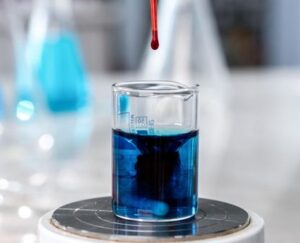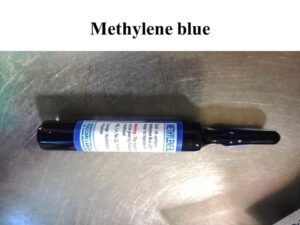Methylene blue a Tricyclic Crystal violet color is a compound that has been used for various purposes in medicine, research, surgical practices, and other fields. It has a wide range of applications and benefits, including its use as a dye, an antiseptic, and a treatment for certain medical conditions. In this article, we will explore the fascinating uses and benefits of methylene blue and how it is being utilized in different industries. Alternative for the Isosulfan blue dye. Dye with many indications, we discuss usage in operation room practices
Composition of Methylene blue
Methylthioninium chloride or 3,7-bis(dimethylamino)phenothiazin-5-ium.
Used in radiological examination and therapeutic endoscopic procedures
Used in many treatments as medication for different diseases.
This dye has been used in medicine for many years and has a variety of medical uses. One of its main uses is as a dye in certain medical procedures, such as staining tissues for microscopic examination. It is also used as an antiseptic, helping to prevent infection in wounds and surgical sites. Additionally, methylene blue has been found to have potential therapeutic benefits in treating certain medical conditions, such as methemoglobinemia, a blood disorder, and cyanide poisoning. Its ability to improve mitochondrial function and reduce oxidative stress has also led to research into its potential use in treating neurodegenerative diseases like Alzheimer’s and Parkinson’s. Overall, the medical uses of methylene blue continue to be explored and expanded upon in various fields of medicine.
Surgical use
Methylene dye used in endoscopic surgery for marking like polypectomy
To mark Sentinel lymph nodes traces
Used in surgical procedures for marking skin for incision
The dye used to mark the tissue and vessels for identification in AVM surgery(Aneurysm, Moyo Moya diseases)
Excreted in urine after 4 to 24 hours after administration. Some of the used with diluted solution or without dilution of the dye
